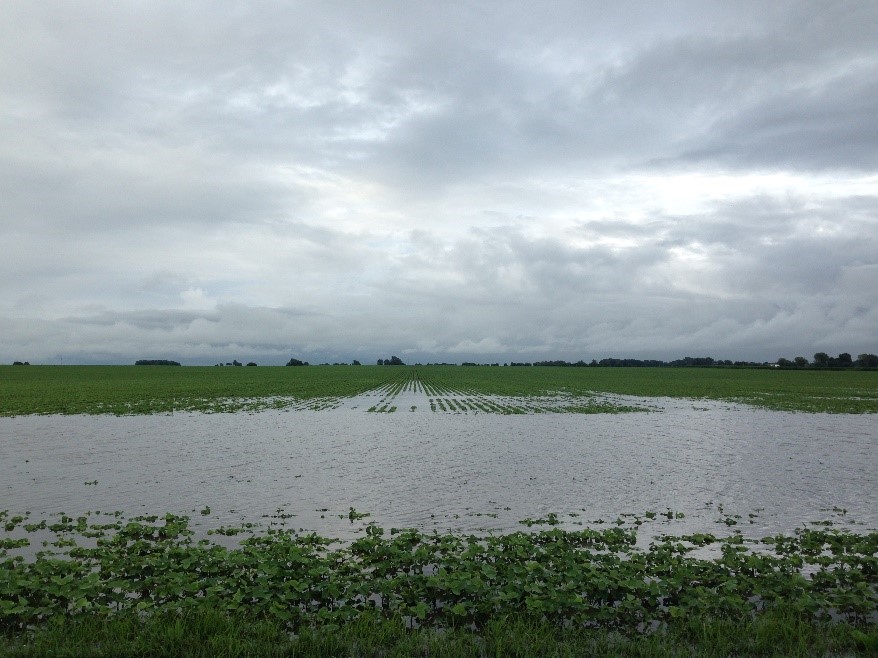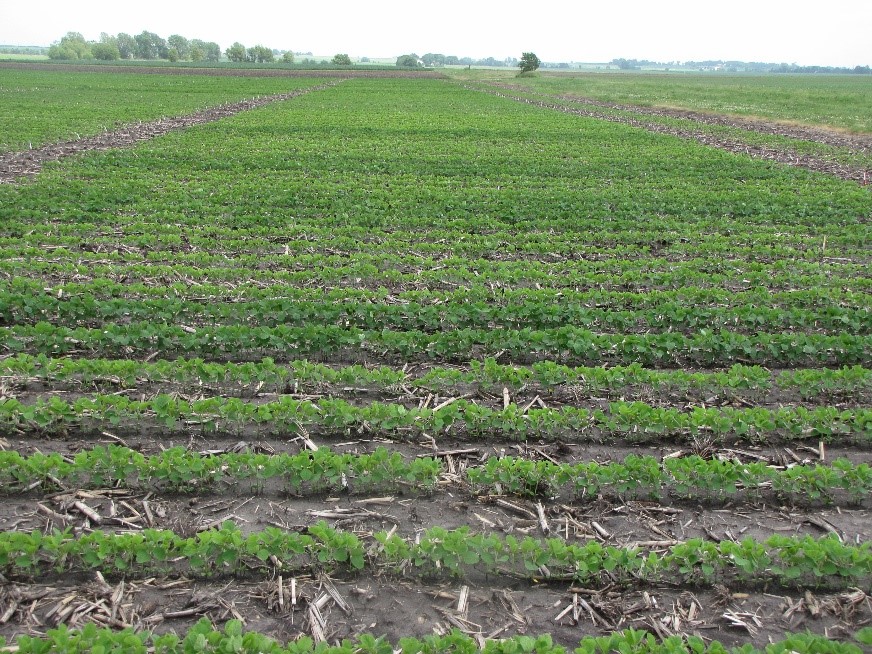It has been a cool and wet spring, which has led to ponded fields, saturated soils, and delayed field work and planting. The crop, once planted, will get off to a late start. If the weather turns and it gets dry and warm the crop will get planted and, hopefully, the rest of the season will remain ideal for the soybean crop to develop.
However, if this rainy pattern continues through June, even if it abates for a week or two to allow planting, continued rain and cloudy weather will slow down development. And when soybeans are slow out of the gate, particularly when the soil remains wet, they can exhibit different degrees of yellowing. I refer to this yellowing as a malaise that impacts soybean plants because they aren’t yet fixing nitrogen.

1 Soybean field with saturated soils in early June. Courtesy of Juliann Seebauer, University of Illinois
Nodule formation can be observed on the developing roots quite early, but nitrogen fixation doesn’t begin until V3 growth stages, or even later if soil conditions aren’t ideal. Remember the rhizobia bacteria that reside in the nodules like ideal soil conditions to thrive, which includes a near neutral pH, warm soils and air.
However, nodules don’t live forever, they sluff off (die) and new ones are added during the growing season, up to podfill. Active nodules have an internal pink hue while those with a darkened hue are dead. In fields that have been extremely wet or dry early in the season, nodule development is delayed, resulting in a nitrogen deficiency.

2 Fertilized soybeans (green) and unfertilized non-nodulating (yellow) soybeans. Courtesy of Fred Below, University of Illinois.
Soybeans have the inherent ability to recover when growth is stalled and compensate for periodic losses in yield due to weather-related stress. Those plants that haven’t drowned out are more than likely experiencing a malaise due to wet feet with reduced growth and nitrogen fixation. Naturally, when weather and soil conditions return to normal, soybeans should bounce back, beginning to look normal as they green up and have the whole month of July and August to flower, set and fill pods. The question is how much yield has been lost due to setbacks in growth in June?
And remember, there are other possible causes of yellowing including root restrictions from compaction, iron chlorosis, glyphosate flash, soybean cyst nematode, or perhaps potassium and sulfur deficiencies. Potassium deficiency appears as yellowing around leaf edges, but appears later in the season. Sulfur deficiencies can occur any time in the season and appear on younger leaves, while nitrogen deficiency often appears on older leaves.




 and then
and then